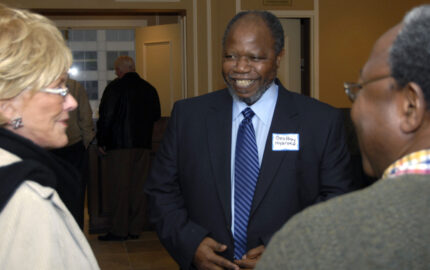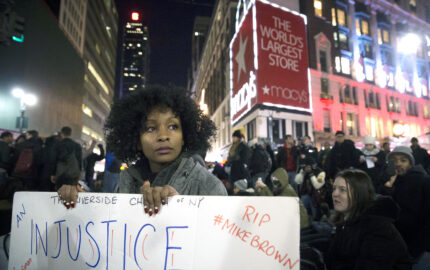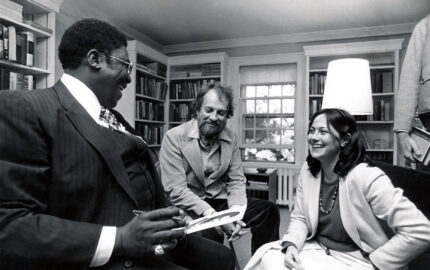There are good story ideas—the ones reporters come up with, and bad story ideas—the ones handed down from editors. I learned that during my 20-year journalism career. So in the summer of 2000, when an editor at US News & World Report asked me to write about boarding schools for “troubled teens,” I did my best to avoid the assignment. I looked for something else—anything else—to cover.
And why not? I didn’t care about a bunch of spoiled rich kids who drank too much or snorted too many drugs. Nor did I care about their self-involved, absentee parents.
Finally, reluctantly, I ran out of other thousand-word diversions and started the reporting. I found several dozen of these places, called therapeutic schools. All offered intense therapy and hour-by-hour structure. More important, I learned that many of America’s 29 million teenagers struggle with alcoholism, eating disorders, and a host of mental illnesses, from depression to schizophrenia.
Visiting a therapeutic boarding school in western Massachusetts, the Academy at Swift River, I met kids who didn’t fit my stereotype. They were funny, bright and—thanks to hours and hours of therapy—very open about what had gone wrong in their lives. Some were wealthy, yes, but others were from middle-class families that took out loans to pay for Swift River’s $5,000-per-month fees.
My US News story ran at just over a page. I felt I had so much more to say—about adolescents, about the failures of public schools, about the strains on American families, even the way we build communities with no sense of community. Many of my thoughts were remainders from my Nieman year, when I had just finished nearly a decade as a reporter in Latin America. Nieman Curator Bill Kovach and Professor John Stilgoe (in his course on the built landscape) encouraged me to train my foreign correspondent’s eyes on my own country, which had been franchised and strip-malled and Wal-Marted during my time abroad.
So I left my job at the newsmagazine and moved my family from the D.C. Beltway suburbs to economically devastated western Massachusetts. (File this decision under “fiscally irresponsible.”) Several of my colleagues in Washington thought I’d lost my sanity. One journalist put it this way: “Why would you want to devote so much time to profiling teenagers? They’ve only lived 15 or 16 years, and they’re so one-dimensional.”
Getting to Know Them
I followed a group of kids as they went through Swift River’s 14-month program. I camped with them, sat in on group therapy sessions, listened to them play guitar, watched them in workshops about dating, sex and time management. Although I volunteered as an English teacher, everyone knew I was an author working on a book and not a faculty member. When the group spent the final five weeks doing community service in Costa Rica’s remote Osa Peninsula, I was there. For the first time in my career, I didn’t want scoops or exclusive information; I wanted to see things unfold gradually, just as Swift River’s counselors did.
I started looking at these students by using the same labels their schools had essentially bestowed on them: Mary Alice the bulimic; D.J. the ADD boy; Bianca the troublemaker; Phil the pill-popper. But found I was surrounded by talented, fascinating kids—kids who concealed horrible truths from their parents, doctors and teachers, the very people who could have helped them. I found out about girls who had been raped and boys who had been beaten up by bullies. The mothers and fathers, too, defied stereotypes. Most weren’t narcissistic and aloof, but quite a few admitted they had been stymied by financial setbacks, divorce, depression or substance abuse.
This winter, Houghton Mifflin will publish the book, “What It Takes to Pull Me Through: Why Teenagers Get in Trouble and How Four of Them Got Out.” My book is unusual for narrative nonfiction because it concludes with a 6,000-word “Memo to Parents” that discusses what I learned.
I’m still grappling with ethical issues raised by the project. How can a balding man in his 40’s observe teens in therapy without skewing the results? When should a writer withhold an embarrassing anecdote about a kid from readers? How can an author condense 14 months’ worth of intense conversations into a book that doesn’t overwhelm everyone? I wish I had good answers. I can only say that I did my best to find a balance, to provide important, useful information without exploiting these families. The parents and kids signed release forms, and I tried to make the book as accurate as I could (names and a couple of hometowns have been changed). I often wake up at 3 a.m. wondering if the book is too graphic, if I’ve humiliated the parents and kids who trusted me with their stories, their secrets, their lives.
My task was especially complicated because Swift River is owned by a for-profit health provider. While I was impressed by much of the program and grateful for the access I was granted, my loyalty was with readers. And so I describe the constant tug between the school’s mission to help kids and its need to meet profit goals.
The experience has made me cynical about newspaper and magazine features. I now distrust drive-by reporting on welfare reform, on education, and especially on teens. You know the drill: Go to a mall or middle school, hang out with kids, then write the definitive story of adolescence. I realize something that many reporters and editors don’t want to acknowledge: It takes months to understand people—even those who have lived for only 15 or 16 years.
David L. Marcus, a 1996 Nieman Fellow, lives in Northampton, Massachusetts and is a visiting scholar at Ithaca College’s Park School of Communications. For more book information, see www.DaveMarcus.com.
And why not? I didn’t care about a bunch of spoiled rich kids who drank too much or snorted too many drugs. Nor did I care about their self-involved, absentee parents.
Finally, reluctantly, I ran out of other thousand-word diversions and started the reporting. I found several dozen of these places, called therapeutic schools. All offered intense therapy and hour-by-hour structure. More important, I learned that many of America’s 29 million teenagers struggle with alcoholism, eating disorders, and a host of mental illnesses, from depression to schizophrenia.
Visiting a therapeutic boarding school in western Massachusetts, the Academy at Swift River, I met kids who didn’t fit my stereotype. They were funny, bright and—thanks to hours and hours of therapy—very open about what had gone wrong in their lives. Some were wealthy, yes, but others were from middle-class families that took out loans to pay for Swift River’s $5,000-per-month fees.
My US News story ran at just over a page. I felt I had so much more to say—about adolescents, about the failures of public schools, about the strains on American families, even the way we build communities with no sense of community. Many of my thoughts were remainders from my Nieman year, when I had just finished nearly a decade as a reporter in Latin America. Nieman Curator Bill Kovach and Professor John Stilgoe (in his course on the built landscape) encouraged me to train my foreign correspondent’s eyes on my own country, which had been franchised and strip-malled and Wal-Marted during my time abroad.
So I left my job at the newsmagazine and moved my family from the D.C. Beltway suburbs to economically devastated western Massachusetts. (File this decision under “fiscally irresponsible.”) Several of my colleagues in Washington thought I’d lost my sanity. One journalist put it this way: “Why would you want to devote so much time to profiling teenagers? They’ve only lived 15 or 16 years, and they’re so one-dimensional.”
Getting to Know Them
I followed a group of kids as they went through Swift River’s 14-month program. I camped with them, sat in on group therapy sessions, listened to them play guitar, watched them in workshops about dating, sex and time management. Although I volunteered as an English teacher, everyone knew I was an author working on a book and not a faculty member. When the group spent the final five weeks doing community service in Costa Rica’s remote Osa Peninsula, I was there. For the first time in my career, I didn’t want scoops or exclusive information; I wanted to see things unfold gradually, just as Swift River’s counselors did.
I started looking at these students by using the same labels their schools had essentially bestowed on them: Mary Alice the bulimic; D.J. the ADD boy; Bianca the troublemaker; Phil the pill-popper. But found I was surrounded by talented, fascinating kids—kids who concealed horrible truths from their parents, doctors and teachers, the very people who could have helped them. I found out about girls who had been raped and boys who had been beaten up by bullies. The mothers and fathers, too, defied stereotypes. Most weren’t narcissistic and aloof, but quite a few admitted they had been stymied by financial setbacks, divorce, depression or substance abuse.
This winter, Houghton Mifflin will publish the book, “What It Takes to Pull Me Through: Why Teenagers Get in Trouble and How Four of Them Got Out.” My book is unusual for narrative nonfiction because it concludes with a 6,000-word “Memo to Parents” that discusses what I learned.
I’m still grappling with ethical issues raised by the project. How can a balding man in his 40’s observe teens in therapy without skewing the results? When should a writer withhold an embarrassing anecdote about a kid from readers? How can an author condense 14 months’ worth of intense conversations into a book that doesn’t overwhelm everyone? I wish I had good answers. I can only say that I did my best to find a balance, to provide important, useful information without exploiting these families. The parents and kids signed release forms, and I tried to make the book as accurate as I could (names and a couple of hometowns have been changed). I often wake up at 3 a.m. wondering if the book is too graphic, if I’ve humiliated the parents and kids who trusted me with their stories, their secrets, their lives.
My task was especially complicated because Swift River is owned by a for-profit health provider. While I was impressed by much of the program and grateful for the access I was granted, my loyalty was with readers. And so I describe the constant tug between the school’s mission to help kids and its need to meet profit goals.
The experience has made me cynical about newspaper and magazine features. I now distrust drive-by reporting on welfare reform, on education, and especially on teens. You know the drill: Go to a mall or middle school, hang out with kids, then write the definitive story of adolescence. I realize something that many reporters and editors don’t want to acknowledge: It takes months to understand people—even those who have lived for only 15 or 16 years.
David L. Marcus, a 1996 Nieman Fellow, lives in Northampton, Massachusetts and is a visiting scholar at Ithaca College’s Park School of Communications. For more book information, see www.DaveMarcus.com.



